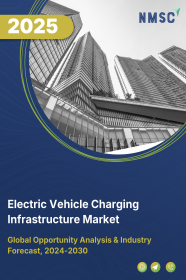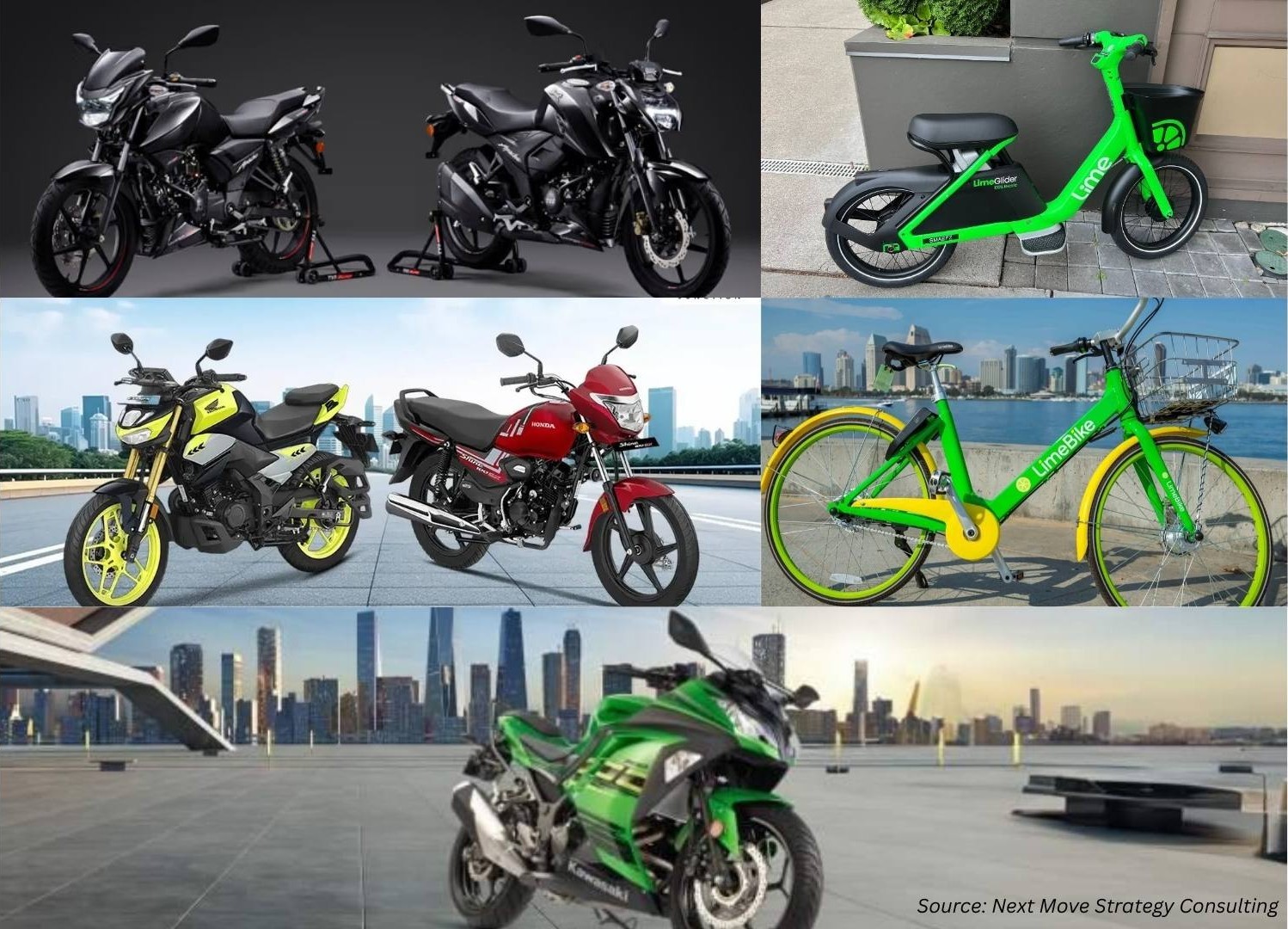
Electric Vehicle Charging Infrastructure Market by Mode of charging (Plug-in charging and Wireless charging), by Charger Type (Slow Charger and Fast Charger), by Charging level (Level 1, Level 2, and Level 3), by Charging Station (AC Charging Station, DC Charging Station, and Inductive Charging Station), and by End User (Residential and Commercial)- Global Opportunity Analysis and Industry Forecast 2024-2030
Market Overview
The global Electric Vehicle Charging Infrastructure Market size was valued at USD 25.37 billion in 2023 and is predicted to reach USD 227.24 billion by 2030 with a CAGR of 36.9% from 2024-2030.
Electric vehicle charging infrastructure refers to the network of charging stations used to recharge electric vehicles, including plug-in hybrid electric vehicles and all-electric vehicles in a safe and reliable charging environment. This includes charging stations, power delivery equipment, wiring, connectors, cords, and other equipment needed to charge electric vehicles. Electric vehicle charging infrastructure includes public charging stations installed in gas stations as well as private charging stations installed in homes and businesses. They can also provide services such as billing, authentication, and energy management.
Market Dynamics and Trends
The electric vehicle charging infrastructure market is witnessing significant growth and expansion, primarily propelled by the widespread popularity and adoption of electric vehicles (EVs) on a global scale. As more consumers and businesses embrace the shift towards sustainable and eco-friendly transportation, the demand for robust and efficient charging infrastructure is rising significantly. Governments and private industries are investing in the development and deployment of diverse charging solutions to accommodate the increasing number of electric vehicles on the roads to support the mass adoption of electric vehicles, fostering a more sustainable and environmentally conscious transportation ecosystem.
Also, the electric vehicle charging infrastructure market is experiencing substantial growth, driven by the escalating environmental awareness and mounting concerns about climate change and greenhouse gas emissions. As governments, businesses, and individuals actively invest in sustainable transportation alternatives to support the broader shift towards eco-friendly mobility, the demand for robust electric vehicle charging infrastructure is poised to rise, boosting the growth of the market.
Moreover, favourable government policies and regulations to promote the sale of EVs and the installation of charging stations are further accelerating the growth of the electric vehicle charging infrastructure market. For instance, in November 2022, the Oregon Department of Environmental Quality invested USD 6.8 million for the expansion and installation of EV charging stations at 64 sites across the state. This strategic investment aims to reduce carbon footprint and air pollution while contributing to the ongoing transition towards cleaner and more environmentally friendly transportation options.
However, the high costs of setting-up EV infrastructure including the cost of charging equipment and installation cost are the major factors restraining the growth of the market. On the contrary, the introduction of non-Lithium-Ion battery-powered vehicles, particularly those utilizing innovative technologies such as aluminum-air batteries are expected to create ample opportunities for electric vehicle charging infrastructure market in coming years. As non-lithium-ion battery technologies gain traction, the demand for charging infrastructure tailored to support these alternative power sources is anticipated to increase, creating a dynamic and evolving landscape for sustainable transportation solutions.
Market Segmentations and Scope of the Study
The electric vehicle charging infrastructure market share is segmented on the basis of mode of charging, charger type, charging level, charging station, end users, and region. On the basis of mode of charging, the market is divided into plug-in charging and wireless charging. On the basis of charger type, the market is classified into slow charger and fast charger. On the basis of charging level, the market is segmented into level 1, level 2, and level 3. On the basis of charging station, the market is divided into AC charging station, inductive charging and DC charging station. On the basis of end-user, the market is classified into residential and commercial. Regional breakdown and analysis of each of the aforesaid segments include regions comprising of North America, Europe, Asia-Pacific, and RoW.
Geographical Analysis
Asia Pacific holds the lion share of electric vehicle charging infrastructure market and is expected to continue its dominance during the forecast period. This is attributed to factors such as the rapidly growing electric vehicle manufacturing industries along with increasing charging infrastructure development in countries such as China, Japan, and India. For instance, in October 2022, the Chinese government launched an ultrafast charging station for electric vehicles (EV), which can charge 20 cars all at once within 8 minutes. As the demand for electric vehicles continues to rise and with ongoing advancements in charging technologies, Asia Pacific is poised to maintain its leadership role in shaping the future of electric vehicle charging infrastructure.
Moreover, favourable government initiatives to promote the adoption of the electric vehicle and investment in the setting up of new charging stations are further driving the growth of the market. For instance, in October 2022, the government of India launched 11 high-tech, low-cost electric charging stations in Delhi. The charging station includes 73 charging points and 12 swapping stations. As governments continue to play a pivotal role in fostering sustainability, the electric vehicle charging infrastructure market is poised to rise in this region.
On the other hand, North America is expected to show a steady rise in the electric vehicle charging infrastructure market due to the increasing investments in EV charging infrastructure by the government and prominent companies such as ADS-TEC and General Electric Company. For instance, in December 2022, ADS-TEC Energy invested USD 8 million for building its first dedicated fast-charging manufacturing facility in the U.S. This strategic move was aimed towards the production of battery-backed ultra-fast charging solutions for the U.S. electric vehicle market.
Moreover, the electric vehicle charging infrastructure market is significantly influenced by the presence of key industry players, including Tesla and ChargePoint Inc. These companies play a key role in boosting advancements, innovation, and market expansion within the EV charging infrastructure market in this region. For instance, in October 2022, Tesla Inc. launched a home charging station J1772 wall connector for electric vehicles. This innovative charging solution is designed to be compatible with both Tesla electric vehicles and other electric vehicles in the market, showcasing Tesla's commitment to advancing and facilitating broader electric vehicle adoption in this region.
Competitive Landscape
Various market players operating in the electric vehicle charging infrastructure market include AeroVironment Inc., MG Motor, BP Chargemaster, ChargePoint Inc., ClipperCreek Inc., Eaton Corp., General Electric Company, Leviton Manufacturing Co. Inc., SemaConnect Inc., Schneider Electric, Siemens AG, Tesla Inc., Webasto SE, Jumptech, Shell plc, and others. These market players are adopting various strategies such as partnerships, new infrastructure set up, and product launches to remain dominant in the market.
For instance, in December 2022, Jumptech partnered with OVO Energy to expand and install electric vehicle charging points across the UK. Also, in September 2022, Shell plc announced to set up more than 10,000 electric vehicles (EV) charging points for both two wheelers and four wheelers in India by 2030.
Moreover, in September 2022, BP Chargemaster partnered with Hertz Global Holdings Inc. to install more than 100,000 electric vehicle (EV) charging stations globally by 2030. Furthermore, in March 2022, MG Motor India announced to install 1,000 AC fast, type 2 chargers for different EVs in residential areas across India.
Key Benefits
-
The report provides quantitative analysis and estimations of electric vehicle charging infrastructure market from 2024 to 2030, which assists in identifying the prevailing market opportunities.
-
The study comprises a deep dive analysis of the electric vehicle charging infrastructure market including the current and future trends to depict prevalent investment pockets in the market.
-
Information related to key drivers, restraints, and opportunities and their impact on the electric vehicle charging infrastructure market is provided in the report.
-
Competitive analysis of the players, along with their market share is provided in the report.
-
SWOT analysis and Porters Five Forces model is elaborated in the study.
-
Value chain analysis in the market study provides a clear picture of roles of stakeholders.
Electric Vehicle Charging Infrastructure Market Key Segments
By Mode of Charging
-
Plug-in charging
-
Wireless charging
By Charger Type
-
Slow Charger
-
Fast Charger
By Charging level
-
Level 1
-
Level 2
-
Level 3
By Charging Station
-
AC Charging Station
-
DC Charging Station
-
Inductive Charging Station
By End User
-
Residential
-
Commercial
By Region
-
North America
-
The U.S.
-
Canada
-
Mexico
-
-
Europe
-
The UK
-
Germany
-
France
-
Italy
-
Spain
-
Denmark
-
Netherlands
-
Finland
-
Sweden
-
Norway
-
Russia
-
Rest of Europe
-
-
Asia Pacific
-
China
-
Japan
-
India
-
South Korea
-
Australia
-
Indonesia
-
Singapore
-
Taiwan
-
Thailand
-
Rest of Asia Pacific
-
-
RoW
-
Latin America
-
Middle East
-
Africa
-
Key Market Players:
-
AeroVironment Inc.
-
BP Chargemaster
-
MG Motor
-
ChargePoint Inc.
-
ClipperCreek Inc.
-
Eaton Corp.
-
General Electric Company
-
Leviton Manufacturing Co. Inc.
-
SemaConnect Inc.
-
Schneider Electric
-
Siemens AG
-
Tesla Inc.
-
Webasto SE
-
Jumptech
-
Shell plc
REPORT SCOPE AND SEGMENTATION:
|
Parameters |
Details |
|
Market Size in 2023 |
USD 25.37 Billion |
|
Revenue Forecast in 2030 |
USD 227.24 Billion |
|
Growth Rate |
CAGR of 36.9% from 2024 to 2030 |
|
Analysis Period |
2023–2030 |
|
Base Year Considered |
2023 |
|
Forecast Period |
2024–2030 |
|
Market Size Estimation |
Billion (USD) |
|
Growth Factors |
|
|
Countries Covered |
28 |
|
Companies Profiled |
15 |
|
Market Share |
Available for 10 companies |
|
Customization Scope |
Free customization (equivalent up to 80 working hours of analysts) after purchase. Addition or alteration to country, regional, and segment scope. |
|
Pricing and Purchase Options |
Avail customized purchase options to meet your exact research needs. |




















 Speak to Our Analyst
Speak to Our Analyst

























